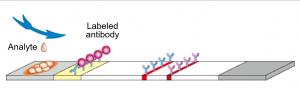In 2014, The Imitation Game, starring Benedict Cumberbatch, was premiered. The movie was a homage to Alan Turing, an English computer scientists and mathematician. Turing invented the Turing Machine which broke the communication code of Nazi Germany during World War II and helped prevent further havoc. Turing’s machine was a precursor to machine learning. Machine learning is an Artificial Intelligence technique that requires no explicit programming. Any machine with the ability of machine learning will be able to learn, make sense out of what it has learned, and provide the information to us. Machine learning might sound like rocket science but it is everywhere. DeepFace on Facebook is one of them. When you post a picture on Facebook, DeepFace suggests tags for who is who. AlphaGo, which is programmed to play the game of Go, defeated Lee Se Dol twice out of three games. Another familiar machine learning program is Google Translate. Google Translate was first launched in 2006 and last year it was upgraded to a neural machine translation. It seems like Google Translate was given a humans’ brain. When you type in “She geun hye you” and translate to Korean, you will see “Geun Hyemakes you angry.” When you type in “I did bad on SAT” in Korean, you will see “I lost my life.” Prior to the upgrade, Google Translate was a mere machine that had no wits and just translated any word to live up to the expectations. Many people were frustrated by what Google Translate offered and put in countless time to try to make sense out of the translation. However, since the upgrade, Google Translate is living up to its name.
I. Before and After
Translations without direct human involvement mainly depends on machine learning. Among many types of machine learning, most used to operate on Statistical Machine Translation (SMT) and now theyoperates on Neural Machine Translation (NMT).
- Before:
SMT automatically studies big data. Big data is an extremely large data set that analyzes computationally to reveal patterns, trends and associations. Based on the big data, SMT will discern each portion statistically. For example, when a computer encounters the word, “table,” it will first look at the definitions of the word. According to the Merriam Webster, table has three distinctive definitions: 1) a piece of furniture consisting of a smooth flat slab fixed on legs 2) a systematic arrangement of data usually in rows and columns for ready reference 3) to place on the agenda. With these three definitions, SMT based computers will differentiate the probability of frequent use for each definition and produce the most appropriate definition. However, to think about the prior translations of Google Translate, we know how these translations are sometimes absurd. Therefore, another version was released: phrase based machine translation (PBMT). While SMT translated word by word, PBMT designated phrases and translated phrase by phrase. Therefore, when a computer encounters the word, “table” it will first determine whether the word is a noun or a verb. Although the word “table” is more often used as a noun, with PBMT, a computer will know when it is a verb and translate with the compatible meaning.
- After:
Still, PBMT could not fully satisfy our needs. Therefore, neural machine translation (NMT) took over. NMT makes use of Deep Learning. Deep learning is a subset of Machine Learning. Since Deep Learning is appertain to Machine Learning, it has the ability to learn by itself. However, what distinguishes Deep Learning from other types of Machine Learning is that it works the way our brain works. With a flood of information, our brain figures out the pattern and processes the data. For example, when teaching a toddler, we show a picture of a dog and tell him or her that we call this hairy creature, “dog.” Then, the next time when the toddler sees a hairy creature, he or she will shout out “dog” even though the animal is a cat. Again, we teach the toddler, we call this animal “cat.” Then, when the toddler views another hairy creature, he or she will shout out either “dog” or “cat.” In fact, we call this creature “lion.” Likewise, we learn by asking true and false questions. Similarly, computers attempts trial and error learning on the basis of what they already know and then learn the pattern.
III. Naver Papago
In 2016, Naver, which is a portal site in Korea, came up with Papago. Papago means a parrot in Esperanto. Esperanto is an international auxiliary language. Naver Papago translates Korean, English, Japanese and Chinese and it translates not only foreign languages to Korean but also Japanese to English, English to Chinese and so on. It offers features such as speech and text translations, Dialogue texts and exchange rates. Therefore, Naver Papago is mainly focused on travel purposes but its biggest weakness is that it does not work without an internet connection. Naver Papago uses N2MT or NaverNeural Machine Translation. It advertises its potential and ability with a line from a verse:
- 내가 그의 이름 불러주었을 때 그는 나에게로 와서 꽃이 되었다.
- SMT: I can call me his name when he came towards me and flowers.
- NMT: When I called his name, he gave me was to come into flower.
- N2MT: When I called his name, he came to me and became a flower.
II. Functions
- Speech, pictures, documents, offline features
After the 2016 upgrade, Google Translate not only offers text translations. On the Google Translate website (translate.google.com), users can input text, speech, documents (only Microsoft Office files), and websites. However, the only limitation with the Google Translate website is that it cannot work without an internet connection. Realizing this, Google came up with a Google Translate app for smartphones. The app offers text, speech and picture translations without an internet connection. Therefore, Google Translate has become omnipotent and omniscient. It has no limit and it is all knowing. However, it does not mean we should overlook a human’s ability. According to the graph below from the Google Research Blog (research.googleblog.com), GNMT (Google Neural Machine Translation) has improved since the PBMT and it is closing the gap between machine and human translations. On the other hand, humans are still superb when it comes to translating prose and verse because humans are able to perceive the subtleties of literature which is hardly acquired by machines. Recently, it was decided that The Daily Records of Royal Secretariat of Joseon Dynasty which is a history record of incoming and outgoing of the Joseon Dynasty Kings will be translated by Artificial Intelligence. With only a human translation, it was expected to take 45 years but with AI translation, it will only take 18 years. One thing we need to realize is that AI translation will only do a rough draft translation. Because humans are still superior, humans will annotate, compare the rough draft translation with the original text and do academic research.
(밑에 문단은 II. Functions에 포함되지 않는 다른 문단입니다!)
On February 21, 2017, Sejong University held a competition called “Men vs. Artificial Intelligence.” It was a competition of 4 human translators with more than 5 years of experience and 3 AI translators, including Google Translate, Naver Papago and Systran. All translators had to translate fiction and non-fiction texts. While the human translators achieved 49 points out of 60, AI translators got an average of 20 out of 60 points. Even before this competition was held, it was self-evident that human translators are still more superior than AI translators but the competition proved that AI translators are just a few steps away from acquiring almost human-like intelligence. However, the reason why they cannot replace humans is that human translators can discern subtleties of context and speakers’ emotions and intentions. However, it does not mean that all the efforts put into developing AI translate is futile. The advantage of AI translate is the speed of translation. The rate of processing information by AI translate cannot be overcome by human translators. Therefore, it is most probable that AI translators will do first draft translations and human translators will do further work. It’s like the way airplanes work: there isan autopilot that work 99.9% but there is a human pilot for 0.01%. Similarly, human translators will not fade away because of the 99.9% but they will still exist for 0.01%.
Lee Yoo Rim yoorimlee2014@gmail.com
<저작권자 © 홍익대영자신문사, 무단 전재 및 재배포 금지>





